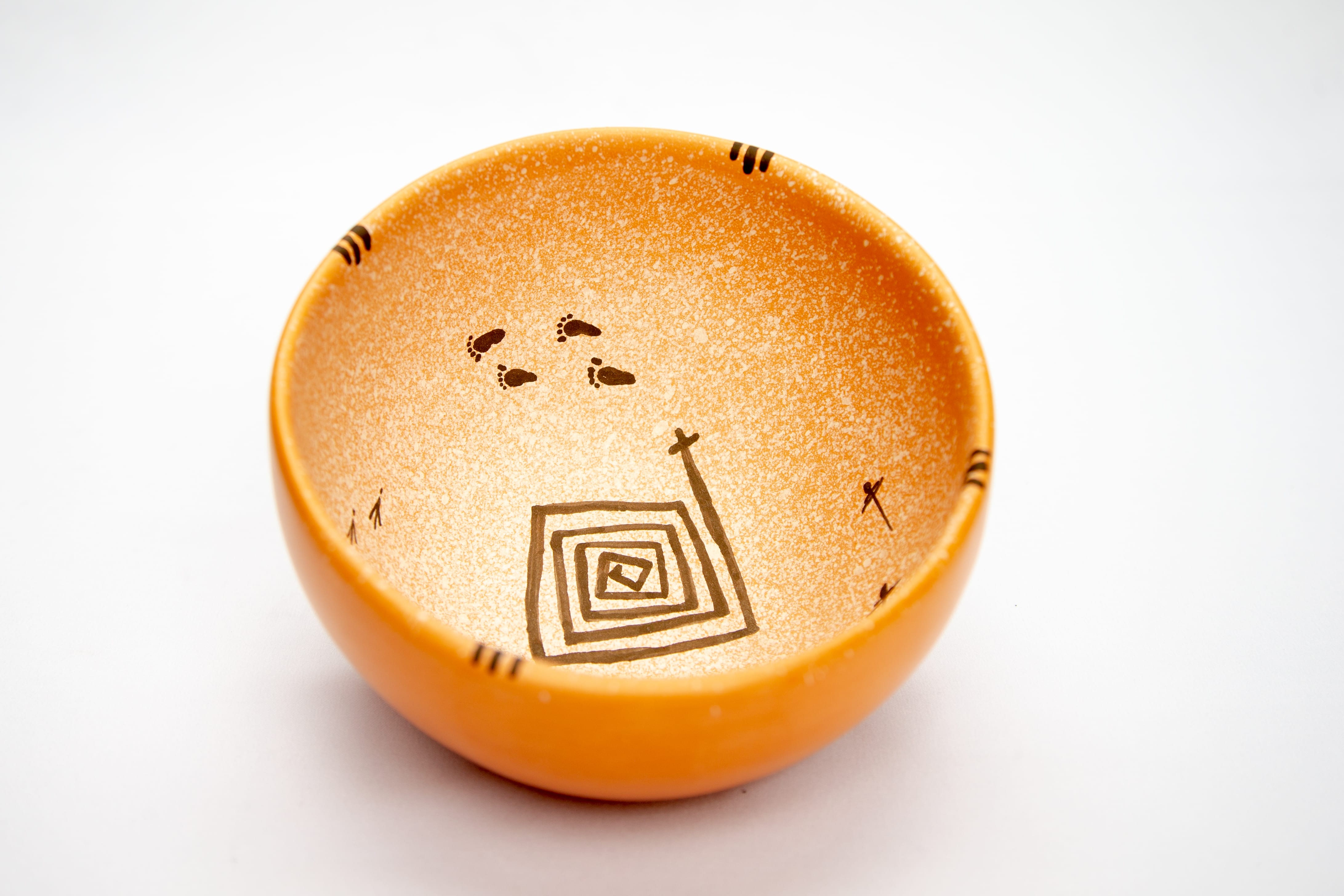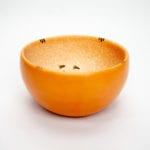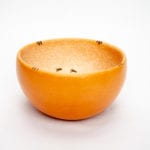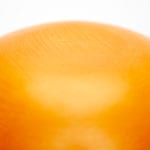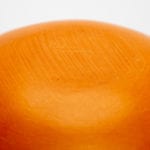Some Hopi pots are spectacular because of the intricacy of their design. This bowl is spectacular because of its simplicity.
The walls of the bowl are substantial and even and the bowl has a flat bottom.
When tapped with a finger, the resulting high-pitch sound indicates that the pot was kiln-fired to a high temperature. The exterior of the bowl is lightly micaceous with tiny flakes of mica. Such clay is not found at Hopi, but is widely found near the northern Rio Grande pueblos of Picuris and Taos. Moreover, when Hopi clay is kiln fired, the result is generally a bleached flat surface (cf. 2010-29), not the darker finish seen here. Notice that Caroline Duwyenie’s name is etched into the base of the bowl. Judging from these very small scratches, the color of the clay used to form the core of the bowl is the same tan color seen on the surface, though the buffed surface is darker. The use of this clay may be tied to Carolyn’s personal history.
The bowl is marked as having been made in 1994. At this time Caroline was married to Preston Duwyenie who was raised at Hotvilla on the Hopi Reservation. From 1988 through 1996 Preston was a professor of traditional pottery and jewelry at the Institute of American Indian Arts in Santa Fe. He is known for his sleek pottery made with micaceous clay, often with silver ingot inserts. I assume that Caroline had access to similar clay, perhaps dug on reservation land north of Santa Fe and used this clay for pot 2017-08. Perhaps this particular clay was chosen because it kiln fires to the same golden hue as Hopi clay that was outdoor-fired, this preserving a traditional look.
Collectors persistently want to know what a pottery design “means.” Wanting to be agreeable, a potter may offer such an explanation. Often such stories have no historical basis, although they become part of the “lore” of pottery collectors. For example, the “migration design” that has been adoped by descendents of Nampeyo as almost a family trademark is derived from a prehistoric design, meaning unknown. (See “fine-line migration design” in “Category” listing.) Nevertheless, the design was linked to prehistoric Hopi myths about tribal migration and the assigned meaning of this decoration is now accepted as true, though of recent invention. On the other hand, Alexander M. Stephen, having lived with the Hopi for several years, believed that many pottery designs had meaning (Patterson, 1994). Of course what a potter is thinking when she decorates a pot may be different still.
Nevertheless, the seven design elements found on pot 2017-08 are widely used and consistently associated with water.
The rim of the bowl is marked with four sets of three parallel lines, which are often interpreted as refering to the four cardinal points on a compass from which clouds may come.The interior of the bowl is stippled with white color, giving the appearance of the sky in a cloudy day. Similar dark stippling is interpreted as representing rain.
According to Alexander M. Stephen (Patterson, 1994: 27-29) the central spiral element on bowl 2017-08 represents the Ho-bo-bo (Twister) spiral conventionalized into a square. Ho-bo-bo is is the source of wind, keeper of the breath. This element is also said to represent the eddies of water that form the entrence to Masau’s home near the mouth of the Little Colorado river in the Grand Canyon, There is a deposit of salt here and traditionally an arduous pilgrimage is made to this sacred spot from Hopi to gather salt for ritual use. (See the discussion of salt container 2009-15 for a discussion of this pilgrimage.)
Encircling this central squared spiral are four clusters of elements, all representing water-seeking animals traveling in a counter-clockwise direction. Two dragonflies follow four human footsteps. The humnas track footspepts left by birds, traditionally the carriers of Hopi prayers for rain. Leading the procession are footprints left by a bear, a totem honored by Santa Clara pueblo as the animal that led humans to water during times of drought.
Though we do not know why Caroline Duwyeni chose these elements to decorate bowl 2017-08, there seems to be a coherence of meaning here. Life seeks water, the central blessing in the desert southwest.

